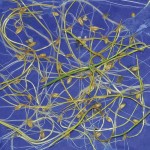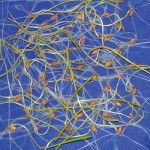Bonnie Ernst, owner and operator of Prairie Diagnostic Seed Lab at Weyburn, Sask., says she’s been seeing much higher levels of fusarium than usual this year.
In wheat, “this year the total is averaging around 14 per cent. The per cent graminearum in that is averaging around 10 per cent.”
This preliminary southeast Saskatchewan snapshot is worse for durum, Ernst says. She’s finding total average fusarium in durum around 18 per cent, with 11 per cent graminearum.
She’s also finding vigour tests to be quite low for untreated wheat as compared with the normal situation. For untreated durum, about 70 per cent.
Read Also

Claas brings 1000 Series SP forage harvesters to Canada
In mid-August, Claas unveiled its new line of Jaguar forage harvesters at an event in Visalia, California, deep in the heart of that state’s dairy region.
-
Ernst said the decayed seeds in this photo were caused by root rot (the total fusarium level in this sample was only 5.5 per cent.)
photo: Leeann Minogue
-
The seeds in this photo are treated from the same sample. The treatment seemed to get rid of the problem.
photo: Leeann Minogue
Ernst warned farmers at a Parrish & Heimbecker information meeting that when they take samples to the elevator for grading, the fusarium level the buyers are seeing is much lower than the levels that will be found through tests at seed labs. Farmers might be told by grain buyers they have, for example, one per cent fusarium, but then, Ernst says, “they get my result back, and it’s quite high in fusarium.”
Buyers base their estimate on what they see, Ernst says. “That’s a visual examination. We do plate method for fusarium.” She estimates that a lab test will often find close to 10 times the percentage of fusarium than a grader will see through a visual examination.
Even the experts aren’t immune to fusarium damage when the conditions are favourable (or unfavourable, in this case.)
“I know on our farm, we checked it and we sprayed it,” Ernst said. “We were in the fields looking, and we thought we’d hit it bang on. And it was still a bad year for fusarium. I just think if we hadn’t sprayed it, it probably would have been way worse.”
If you’re treating your seed, Ersnt is cautiously optimistic. “The newer treatments seem to work really well,” she said. “I can’t say that it will eliminate it completely.”
If you’re sample is around 80 per cent germination, she said, “the treatment is cutting it, and the germinations are going up.” If you have a sample with lower germination levels, “you aren’t going to see as good a result with the treatment on the seed.”

















